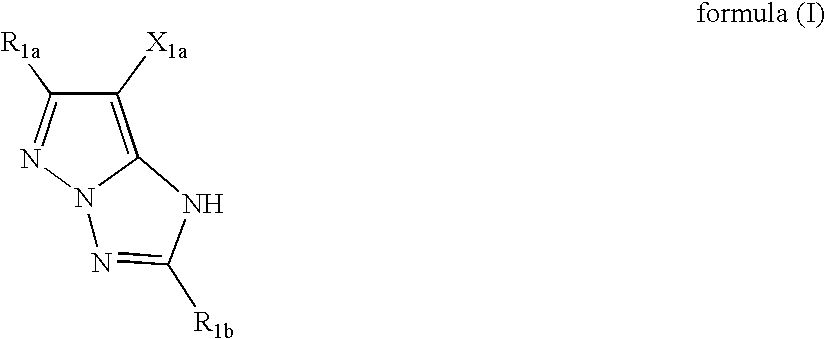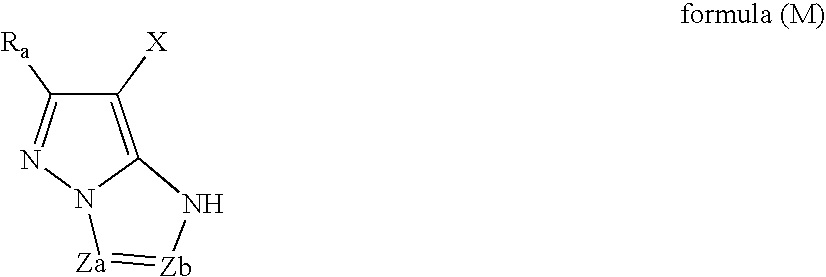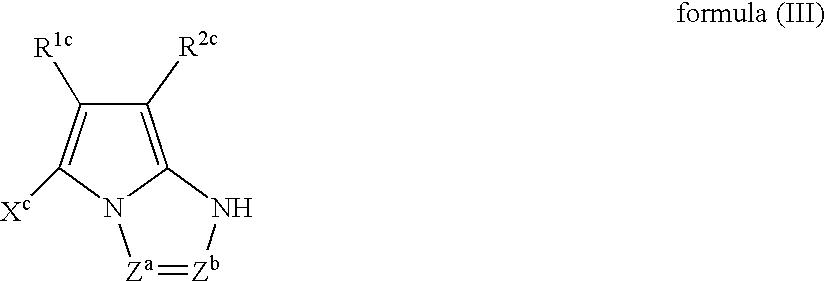Silver halide color photographic light-sensitive material and method of forming a color image
a color photograph and light-sensitive material technology, applied in the direction of photosensitive materials, photosensitive materials auxiliaries/base layers, instruments, etc., can solve the problems of deteriorating image quality, halide color photographic light-sensitive materials are not satisfactory in ease and processing speed, and the techniques described above do not reach drastic or radical improvements, etc., to achieve rapid processing suitability
- Summary
- Abstract
- Description
- Claims
- Application Information
AI Technical Summary
Benefits of technology
Problems solved by technology
Method used
Image
Examples
example 1-1
[0455]Photographic constitutional layers of the first layer to seventh layer were coated successively on the above reflective support A, to prepare a sample A001A of a silver halide color photographic light-sensitive material having the layer constitution shown below. A coating solution for each photographic constitutional layer was prepared as below.
Preparation of Fifth Layer Coating Solution
[0456]50 g of a cyan coupler (ExC-1), 220 g of a cyan coupler (ExC-2), 220 g of a color-image stabilizer (Cpd-1), 10 g of a color-image stabilizer (Cpd-9), 10 g of a color-image stabilizer (Cpd-10), 20 g of a color-image stabilizer (Cpd-12), 140 g of an ultraviolet absorbing agent (UV-1), 30 g of an ultraviolet absorbing agent (UV-3), and 60 g of an ultraviolet absorbing agent (UV-4) were dissolved in 200 g of a solvent (Solv-6) and 350 ml of ethyl acetate, and the resulting solution was emulsified and dispersed in 6500 g of a 10% aqueous gelatin solution containing 200 ml of 10% sodium dodecyl...
example 1-2
[0492]The samples in Example 1-1 were processed using the processing step B, with the color development time being 20 sec or less, and increase of fog was evaluated according to Example 1-1. As a consequence, the same results as in Example 1-1 were obtained.
example 1-3
[0493]The type of magenta coupler in the third layer and the support were altered in the sample A201A, to make samples A2001 to A2016. In changing the type of magenta couplers, they were replaced so as to be equal in mol. Using these samples, the evaluation b was made. The results are shown in Table 4.
[0494]
TABLE 4SampleType ofNo.supportType of magenta couplerΔlog ERemarksA2001AM-21 / M-32*0.08ComparativeexampleA2002BM-21 / M-32*0.02This inventionA2003CM-21 / M-32*0.02This inventionA2004DM-21 / M-32*0.02This inventionA2005AM-210.08ComparativeexampleA2006BM-210.02This inventionA2007CM-210.02This inventionA2008AM-610.09ComparativeexampleA2009BM-610.02This inventionA2010CM-610.02This inventionA2011AComparative coupler M10.09ComparativeexampleA2012BComparative coupler M10.04This inventionA2013CComparative coupler M10.04This inventionA2014AComparative coupler M20.09ComparativeexampleA2015BComparative coupler M20.04This inventionA2016CComparative coupler M20.04This invention*M-21 / M-32 were used w...
PUM
 Login to View More
Login to View More Abstract
Description
Claims
Application Information
 Login to View More
Login to View More - R&D
- Intellectual Property
- Life Sciences
- Materials
- Tech Scout
- Unparalleled Data Quality
- Higher Quality Content
- 60% Fewer Hallucinations
Browse by: Latest US Patents, China's latest patents, Technical Efficacy Thesaurus, Application Domain, Technology Topic, Popular Technical Reports.
© 2025 PatSnap. All rights reserved.Legal|Privacy policy|Modern Slavery Act Transparency Statement|Sitemap|About US| Contact US: help@patsnap.com



